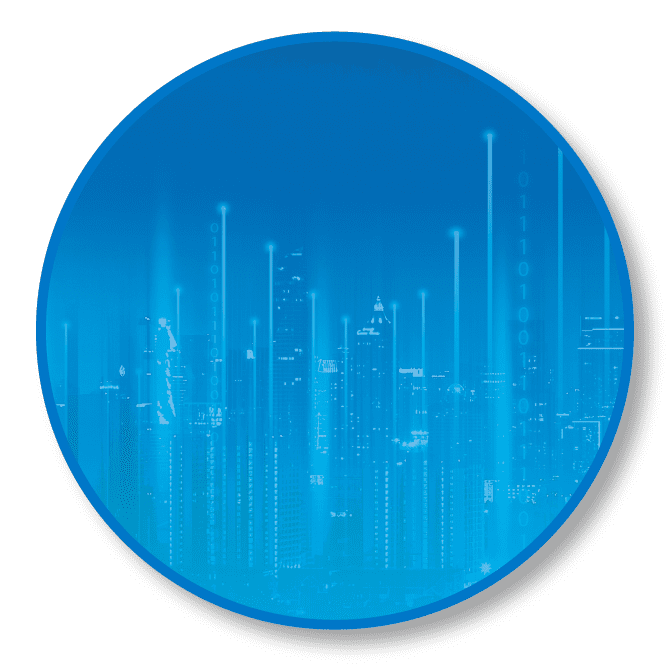Marketing creates demand, and revenue management captures it—so why do these teams often seem misaligned?
What does it take to bring them closer together? And how can that collaboration translate into better hotel performance?

A Look Ahead in Hospitality
A more unified, simplified and resilient future for hospitality is coming. Is your organization ready to seize the opportunity?
Commercial collaboration is a hot topic in the hospitality industry today. To find answers to these questions, IDeaS recently hosted an info-packed LinkedIn Live session featuring experts in both fields. The session coincided with the launch of IDeaS Spotlight, a powerful demand intelligence solution designed to break down barriers between these two essential functions.
If you missed it, here’s a summary of eight practical ways to build stronger collaboration and deliver better results.
1. Share Relevant Data Across Teams
Kicking off the discussion, Mike Chuma, VP of global marketing at IDeaS, asked how hotels can better bridge the gap between the two teams.
“For us in marketing, it’s about sharing the most relevant information to align our actions not only with the needs of the revenue team, but also with the business overall,” said Simone Stewart, global head of digital and eCommerce at Maybourne.
This means being fully transparent about need periods and using marketing tools to drive bookings when and where they will have the greatest impact. Equally important is avoiding wasted resources when demand is already strong.
2. Communicate Early and Often
Timing is everything, noted Emma Buckley, head of revenue management at Staycity Group. “The revenue team might know where the gaps in demand are, but sharing that information with marketing early is key to acting on it effectively.”
Rebecca Frenkel, business analyst, emerging solutions at IDeaS, added, “Teams shouldn’t learn about actions after they’re taken. Consistent communication and shared data are essential to working toward common goals.”
3. Focus on High-Quality, High-Value Demand
Not all demand is equal—and neither are marketing or distribution channels.
“We turn to marketing when we need demand, but we also need to focus on driving higher-quality demand during peak periods,” said Buckley. “For this to happen, everyone needs to understand which channels and guest segments are the most profitable.”
To ensure activities are as targeted and strategic as possible, teams must also understand price elasticity, booking lead times, and guest behavior. But this insight only drives results if it’s readily accessible—not buried in reports.
4. Build a Foundation of Mutual Understanding
Beyond sharing data, teams need to understand each other’s tools, capabilities, and strategies.
Simone Stewart suggested that marketing hold education sessions for revenue teams to demystify marketing channels, explain where there is and isn’t flexibility, and show how campaigns can be activated.
“On the revenue side, we have as much data as we could possibly want from IDeaS Optix,” said Buckley. “But we need to build a consensus on how to act on that data.”
She added, “Aligning on triggers—such as what to do when we’re behind pace—and knowing the levers marketing can pull will help us move faster when opportunities arise.”
5. Look Beyond Occupancy: Analyze Demand Sources
It’s not just about how full you are—it’s about what’s filling your hotel.
“You might be forecasting high occupancy for an upcoming weekend,” said Chuma, “but you still have lots of suites available. Should marketing help fill them, or should revenue focus on upgrades? It opens up a plethora of opportunities.”
Blending predictive analytics with targeted marketing activities will help ensure these decisions bring the highest possible returns.
6. Plan Ahead, but Stay Nimble
Taking the long view is critical. Marketing must plan campaigns and allocate budgets well in advance, while revenue management needs to forecast demand, set rates, and apply availability controls.
“There are patterns we can identify 12 months out,” said Buckley. “For example, recurring events happen every year. With the right data, we can anticipate booking windows and pace—and act early if we’re falling behind.”
Strong advance planning ensures teams are prepared to respond quickly when opportunities arise or when unexpected disruptions, like a canceled event, threaten to impact demand.
7. Be Ready to Pivot in Real Time
“Market conditions can change in a heartbeat,” said Stewart. “We need the flexibility to adjust budgets, pause or launch campaigns, and re-target regions based on real-time demand signals.”
She pointed to postseason sports events as a great example: “The moment your team wins, travel searches spike. You need campaigns ready to deploy now—not next week.”
8. Invest in Tools That Enable Real Collaboration
In today’s dynamic marketplace, marketers can’t afford to wait for revenue meetings or sift through spreadsheets to take action.
“Demand information needs to be presented in a highly visual and digestible way to identify needs and deploy campaigns in a timely manner,” said Stewart.
That’s where IDeaS Spotlight comes in. Built on the powerful G3 RMS platform, Spotlight gives marketing teams direct visibility into forecast data and performance insights—without delays or guesswork.
Key features include:
- A focused dashboard highlighting periods of high opportunity
- AI-powered forecasting and analytics from IDeaS’ G3 RMS
- Price sensitivity signals to inform smarter campaign decisions
- Potential to influence demand metric
- Tracking of marketing’s direct impact on forecasts and revenue performance
With Spotlight, marketing and revenue teams can finally align on a shared, real-time view of demand, with the tools and insights they need to act swiftly and strategically.
Ready to Unleash the Power of True Collaboration?
So, what does it take to bring marketing and revenue management together? It starts with shared goals, accessible data, and tools that empower both teams to act in real time.
With the right alignment, commercial teams can break down traditional barriers and drive stronger performance across every segment of the business.
Discover how IDeaS Spotlight can help your organization make it happen.
